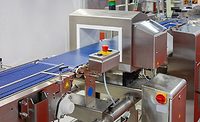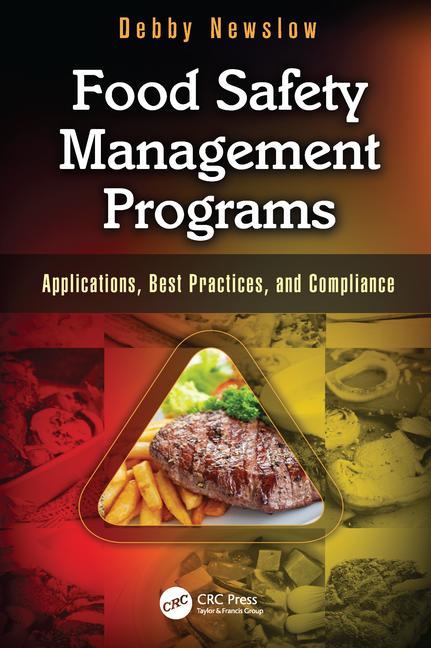How is the Revolution in Technology Changing Food Safety?—Part 3
Food safety professionals continue to be focused on efforts to continually get better at their fundamental responsibility to produce safe food

Image credit: microgen/iStock/Getty Images Plus via Getty Images
In the first two columns of this series1,2 about the impact of technology on food safety, we reported on what we learned from our survey of approximately 200 food processors from 38 countries around the world, what new technologies they have adopted, and what that has meant for their daily operations. In those segments, we heard about the adoption of new processing and testing technologies, and how these technologies are improving food processing techniques and making environmental monitoring and control of chemical contamination more effective.
In Part 3, we will hear more comments on our survey questions on testing technologies, with an additional focus on those survey participants from outside of the U.S. and Canada. We will then continue to review other opinions and comments from all of the participants in all geographies on which technologies they believe have had the most impact, and where additional technology development and application are needed to solve pressing food safety issues.
International Response to Technology Questions
We saw a similar trend in the answers from international respondents as from respondents in the U.S. and Canada, but with more emphasis on specific rapid test methods and adoption of better technology across a wide range of analyses (Figure 1). Several companies in Asia mentioned adding technologies like polymerase chain reaction (PCR), high-performance liquid chromatography (HPLC), and other lab-based methods to their in-plant lab capabilities. These companies also indicated that they have an in-plant laboratory for chemistry and microbiology analysis. Commercial laboratories may be less available in Asia, making outsourcing less prevalent and in-plant analysis necessary.
Several of the European respondents mentioned increasing their use of whole genome sequencing (WGS) and metagenomics, with most of the comments indicating that this is to provide a better understanding of environmental risks and increase data for source tracking. One company mentioned that they had "…adopted WGS, [as] it is important to know if a pathogen is a transient organism or a local organism." Another mentioned, "…by sequencing isolated DNA and/or that extracted from food samples, we can have a much more detailed and sensitive view on what is in the sample, and/or what genes are present in the isolates. It also tells us if the isolates come from the same ancestor."The source tracking and monitoring efforts did not stop at microbiology only, as indicated by a response from a food safety specialist in the UK, who mentioned that they had adopted "…rapid allergen verifications for clean-downs and changeovers to support allergen control studies and continual food safety during manufacturing. This also allows flexibility for out-of-sequence, short-notice changeovers, while assuring allergen control."
However, these comments from around the world—and those we heard in the previous parts of this series—do not mean that our survey respondents do not see the need for additional new technologies to solve existing problems. This was made clear to us when we asked all of the participants in all geographies the question, "What current food safety issue could most benefit from technology improvements?" (Figure 2).
Here, again, the clear trend was for better technology to better manage hygiene and safety risks at the plant level. The majority of the responses were related to sanitation and hygiene, including pathogen control, allergen control, and general hygiene and sanitation being mentioned as important by all of the respondents throughout all of the regions. (Note: minor differences in emphasis were noted in different regions and countries, but with largely similar comments and concerns.)
Consistent with what we heard in Part 2 regarding an increased focus on environmental monitoring and microbiological control, many respondents mentioned that having faster test results for pathogen contamination would enable more potential pathogens to be detected in time to prevent distribution of affected product. Many also mentioned that faster tests would facilitate the utility of collecting even more samples, as sampling and resampling could be completed more effectively with more rapid results. Faster results also make it more likely that a product shipped prematurely can be intercepted before being delivered to consumers. One quality assurance (QA)/compliance specialist for a vegetable processor reinforced this point, saying that "…rapid results from testing conducted directly in the field during harvest could help avoid sending product to suppliers or consumers and have a real impact on saving lives."
The need for rapid tests and better hygiene/sanitation practices was also the main theme behind the comments regarding allergen control. Respondents to our survey were primarily looking for better and faster methods to rapidly collect and analyze plant equipment and surfaces for allergen residues to enable more effective and faster product changeovers on production lines.
The need for better analytical speed of tests was not limited to pathogens or allergens. Many processors also mentioned the need to have better control of chemical contamination and cross-contamination as part of their sanitation/cleaning programs. They expressed the desire for faster tests to enable better and quicker decision-making and facilitate overall higher volume of testing, similar to the philosophy behind pathogens and allergens. One major beverage manufacturer mentioned, "…we are using faster ELISA tests for patulina testing. We can now test for patulin in apple juice within hours, and for just a few hundred dollars. It means we can receive results on the same day as processing." This respondent also said he would like to have this same capability in other areas of chemistry to enable "… easier, faster, and cheaper MRLb testing on fresh produce, causing growers to have less pushback to do more frequent testing."
Desired Process Improvements
Outside of testing technology, others also mentioned better non-thermal processes for improved treatment of ready-to-eat (RTE) products for pathogen control. A regulatory specialist at a poultry company pleaded for regulatory relief to allow for implementation of such treatments, saying, "USDA-FSIS [should allow] radiation treatment of meats and poultry without requirement for labeling as such, similar to FDA's allowance."
Traceability came in second as an area where technological improvements are needed. "Traceability will be the main contributor to farm safety at the farm or production level, as it makes it easier to track the origin of food, while AI and blockchain will provide opportunities at the farm level," said a QA/regulatory manager at an ingredients supplier. Another protein supplier is anticipating the need for advanced and faster technologies to support the upcoming focus on traceability and to make it practical. In order to meet traceability requirements, he noted, "…traceability technology will need to be able to execute searches—forward and backward—in less than four hours."
We also asked for ranked opinions on a number of existing technologies, including which have had the most impact on food safety (Figure 3). Although mentioned less frequently in our open-ended questioning, "database technologies" received the most votes. It is interesting that "digital records" received the third-most votes (especially from U.S. readers) in the unprompted questions about which process technologies have been adopted in the past 5–10 years. However, I think this ranking of database technologies to the number-one spot, only when prompted, is somewhat due to the incorporation of digital records and the use of online and other databases and electronic tools becoming "table stakes" (i.e., generally being taken for granted and not being considered as an innovative technology). We did hear a number of comments about versions of digital innovations, such as AI and analytics. Even though our previous surveys on traceability showed that many companies are still using paper and spreadsheets to track their supply chain, most people consider digital records as common and not new technology.
In second and third place—not surprisingly, considering what we have discussed above—were the lower detection levels of microbiology and chemistry tests, and being able to detect analytical targets more accurately and at far lower concentrations than possible in the past. Also mentioned were improvements in sampling techniques and sample processing to enable more accurate testing.
In this three-part series, we heard a great deal about how technology is being used to make food safer and processing more efficient and effective. We also heard a generally higher level of focus on better contamination control, including an emphasis on environmental monitoring to further that goal, plus better recordkeeping for better information management—especially for traceability—to back up those efforts.
In my opinion, the best way to summarize all that we heard is to say that food safety professionals continue to be focused on efforts to continually get better at their fundamental responsibility to produce safe food. They also continue to apply new technologies to further that goal, wherever possible and practical—and that has to be good news.
References
- Ferguson, B. "How is the Revolution in Technology Changing Food Safety?" Food Safety Magazine June/July 2024. https://www.food-safety.com/articles/9589-how-is-the-revolution-in-technology-changing-food-safety.
- Ferguson, B. "How is the Revolution in Technology Changing Food Safety?—Part 2." Food Safety Magazine August/September 2024. https://www.food-safety.com/articles/9672-how-is-the-revolution-in-technology-changing-food-safetypart-2.
Notes
a Patulin is a mycotoxin that can be a common contaminant in apple products.
b MRL indicates the maximum residue levels for pesticides.
Bob Ferguson is President of Strategic Consulting Inc. and can be reached at bobferguson9806@gmail.com or on X/Twitter at @SCI_Ferguson.
Looking for a reprint of this article?
From high-res PDFs to custom plaques, order your copy today!







